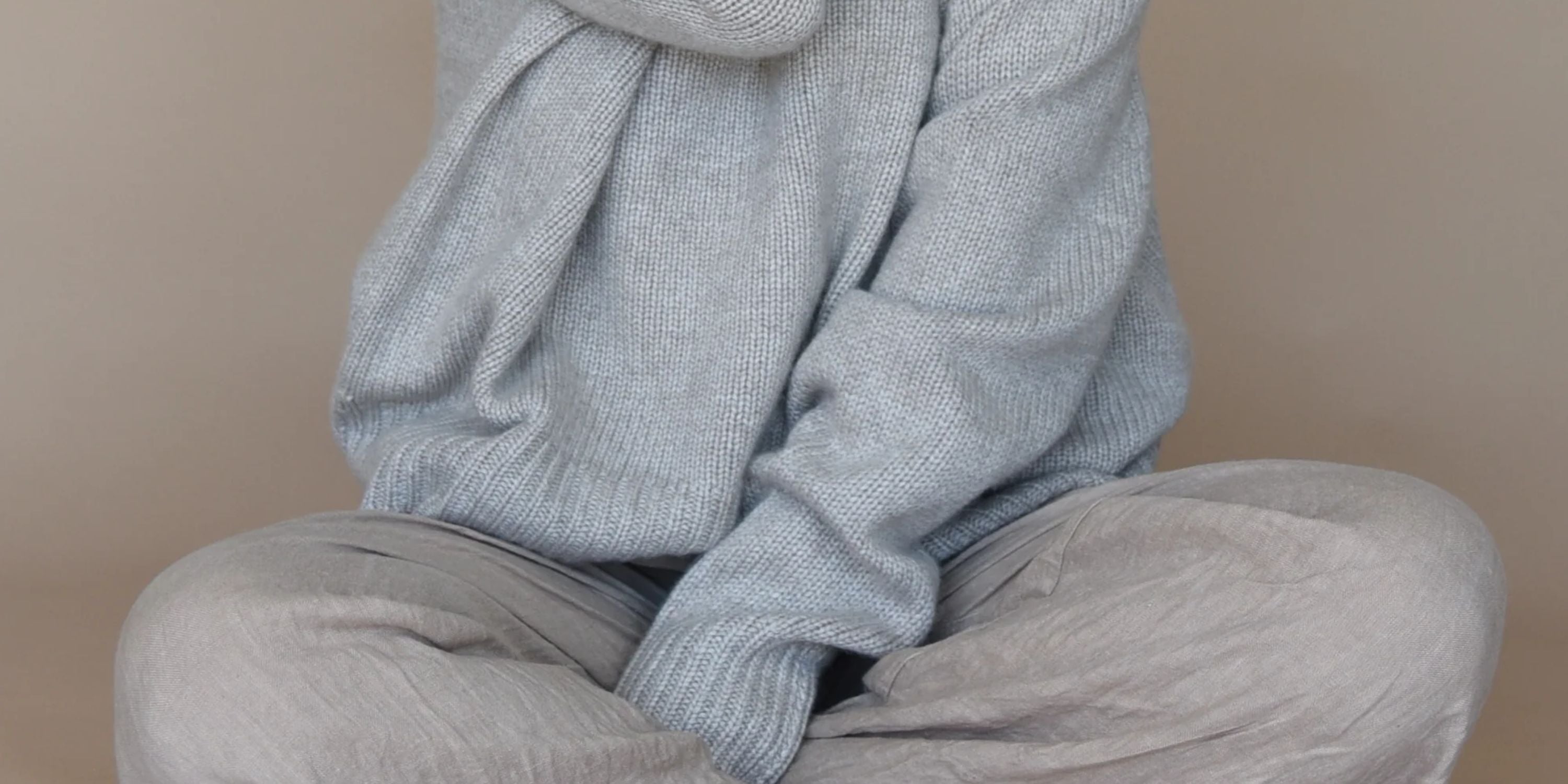
A Complete Guide to the Process of Making Cashmere
Have you ever wondered what makes cashmere so irresistibly soft and luxurious? Behind every delicate thread lies an intricate transformation that turns raw fibers into the exquisite garments we adore. By understanding the process of making cashmere—from the careful collection of fibers to the craftsmanship behind each piece—you'll unlock the secret to recognizing superior quality. Let's explore the journey of this cherished material and discover how to choose pieces that truly stand the test of time.
What Is Cashmere?
Cashmere is a rare and luxurious fiber derived from the undercoat of cashmere goats, primarily found in the high-altitude regions in various Asian countries. It is renowned for its unparalleled softness, offering a velvety sensation that feels indulgent against the skin.
Cashmere’s delicate, long fibers create its silky texture that also enhances its durability, making it a perfect blend of comfort and elegance. Lightweight yet naturally insulating, cashmere strikes the ideal balance by insulating without adding bulk. It’s no wonder cashmere remains a treasured choice for those seeking luxurious comfort in the wintertime or year-round.
Where Is Cashmere Sourced?
The production of cashmere begins with specific breeds of goats that thrive in harsh, mountainous climates around the world. During the chilly winter months, these goats grow a soft, cozy undercoat to stay warm in freezing temperatures. When spring rolls around, the goats naturally shed their undercoat, making this season the optimal time for fiber collection.
Mongolia produces approximately 40 percent of the world's cashmere, with herders raising goats that thrive in the country's extreme temperature variations. China contributes another significant portion, particularly from Inner Mongolia and other northern provinces. Other significant cashmere-producing regions include Iran, Afghanistan, India, and parts of Central Asia. Geographic location is a key factor to pay attention to as you shop for cashmere clothing, as more extreme climates typically produce finer, more luxurious cashmere.

Understanding the Steps of Cashmere Production
The process of making cashmere into luxurious garments involves several precise steps that require skill, patience, and attention to detail. Each stage plays a crucial role in maintaining the fiber's quality and ensuring the final product meets the highest standards.
Gathering Raw Materials
Cashmere collection occurs annually during the spring molting season when goats naturally shed their winter undercoats. Skilled herders use special combs to separate the fine undercoat from the coarser outer guard hairs. This combing process requires patience and expertise to avoid damaging the delicate fibers. Some producers use shearing methods, but combing typically yields higher-quality results.
Cleaning and Dehairing
Once gathered, the raw fibers are cleaned to remove dirt, grease, and other impurities. The fiber then undergoes dehairing, where coarse outer hairs are separated from the fine undercoat. This separation process requires precision, as even small amounts of guard hair can significantly impact the final product's quality and softness.
Spinning Fibers
The cleaned fibers are carded to align and disentangle them, preparing them for spinning. During this stage, the fibers are transformed into fine yarns, with exceptional attention paid to maintaining their strength, softness, and uniformity. Premium cashmere requires gentle handling during this stage to preserve the natural characteristics that make the material so desirable.
Dyeing
The spun yarn is dyed using high-quality, colorfast pigments that preserve the fiber’s softness. Some manufacturers dye the fiber before spinning, while others prefer to dye the finished yarn. Dyeing must be done with care to maintain the integrity of the cashmere, resulting in rich, even coloring that enhances the material’s luxurious appeal.
Weaving or Knitting Garments
Dyed cashmere yarn moves to production facilities where skilled artisans create finished garments. Knitting machines or weaving looms transform the yarn into fabric panels according to specific garment designs. The production process varies depending on the intended final product, whether creating sweaters, scarves, or other knitwear items.
Adding Finishing Touches
Finishing processes enhance the cashmere garment's appearance, feel, and durability. These treatments may include gentle washing to soften the fabric, pressing to achieve the desired shape, and quality inspection to ensure perfection. The finishing stage also includes final quality checks to ensure each garment meets the manufacturer's standards before packaging. This protects the garments during shipping and storage while maintaining their pristine condition.

How To Shop for Cashmere Clothing
Purchasing quality cashmere requires understanding what to look for and how to evaluate different options. Smart shopping strategies help ensure you invest in pieces that provide lasting value and satisfaction.
Take a Close Look at the Material
Examine cashmere garments carefully before purchasing to assess their quality and construction. Feel the fabric between your fingers to check for softness and smoothness. High-quality cashmere should feel luxurious without any roughness or scratchy texture. Pay attention to finishing details like buttons, zippers, and hemlines, as these elements indicate overall garment quality.
Check the Cashmere Grade
Different cashmere grades are available at various levels of quality and price points. Grade A cashmere uses the finest fibers and commands premium prices, while lower grades may include shorter fibers or minor imperfections. Higher grades typically offer better durability and appearance retention over time. Understanding these distinctions helps you make informed decisions based on your budget and quality expectations.
Consider the Garment’s Origin
Cashmere origin significantly impacts both quality and price. Some brands specialize in specific regions or production methods that affect the final product characteristics. Research the manufacturer's reputation and quality standards to understand what you're purchasing. Origin information helps you evaluate whether the price reflects the actual quality you're receiving.
Understand the Care Requirements
Proper cashmere care extends garment life and maintains appearance over time. Most cashmere requires gentle hand washing or professional dry cleaning to prevent damage. Understanding care requirements before purchase helps you decide whether you can properly maintain the garment. Factor care costs and time commitments into your purchasing decision.
Invest in Timeless Designs
The best way to make the most of the cashmere garments you buy is to select timeless designs that also speak to your personal style. Timeless styles provide better value for your investment since they won't become outdated quickly. Quality cashmere pieces should complement your existing wardrobe and provide versatility for various occasions.
Expand Your Cashmere Collection
Knowledge of cashmere production enhances your appreciation for this remarkable fiber and helps you make informed purchasing decisions. We hope this guide on how cashmere is made empowers you to recognize quality, care for your investments properly, and enjoy the unmatched comfort and elegance that only genuine cashmere provides.
At Beachwood, we believe in only offering the highest-quality, timeless women’s knitwear made from 100 percent Mongolian cashmere that’s designed to last a lifetime. When you shop at Beachwood, you not only minimize your reliance on fast-fashion, but you also support a woman-owned business that plants a tree in the Amazon for every purchase. Browse our entire knitwear collection today and grow your wardrobe with sustainable cashmere pieces!


